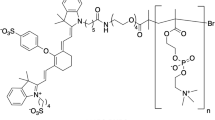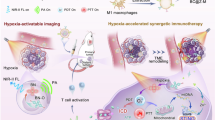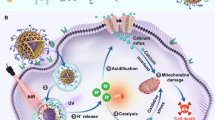Abstract
The use of gold nanorods for photoacoustic molecular imaging in vivo with simultaneous multiple selective targeting is reported. The extravasation of multiple molecular probes is demonstrated, and used to probe molecular information of cancer cells. This technique allows molecular profiles representing tumor characteristics to be obtained and a heterogeneous population of cancer cells in a lesion to be determined. The results also show that the image contrast can be enhanced by using a mixture of different molecular probes. In this study, HER2, EGFR, and CXCR4 were chosen as the primary target molecules for examining two types of cancer cells, OECM1 and Cal27. OECM1 cells overexpressed HER2 but exhibited a low expression of EGFR, while Cal27 cells showed the opposite expression profile. Single and double targeting resulted in signal enhancements of up to 3 dB and up to 5 dB, respectively, and hence has potential in improving cancer diagnoses.
Similar content being viewed by others
Article PDF
Author information
Authors and Affiliations
Corresponding author
Rights and permissions
About this article
Cite this article
Li, PC., Shieh, DB., Wang, CR. et al. in vivo photoacoustic molecular imaging with simultaneous multiple selective targeting using antibody-conjugated gold nanorods. Nat Prec (2008). https://doi.org/10.1038/npre.2008.1687.1
Received:
Accepted:
Published:
DOI: https://doi.org/10.1038/npre.2008.1687.1



